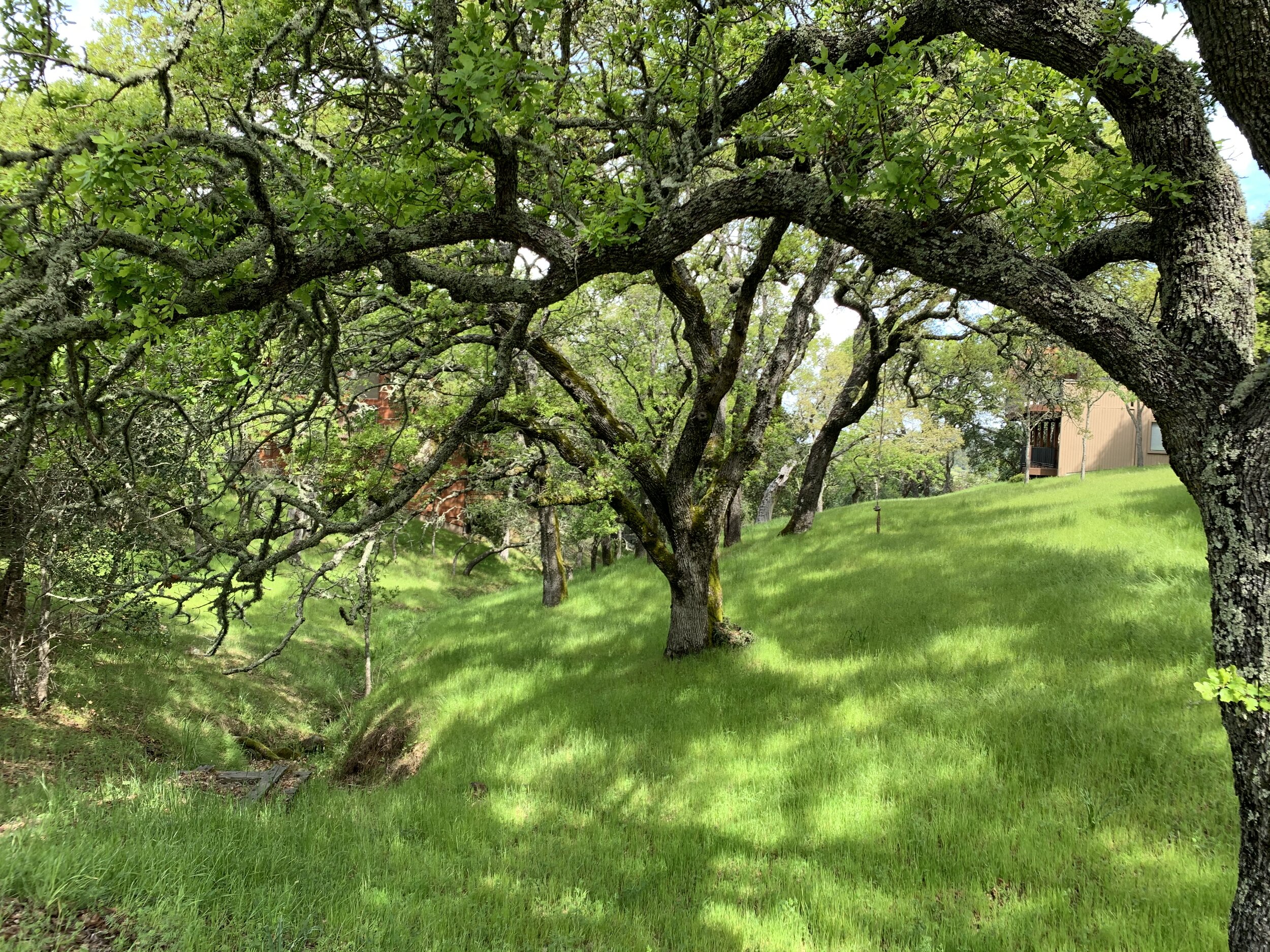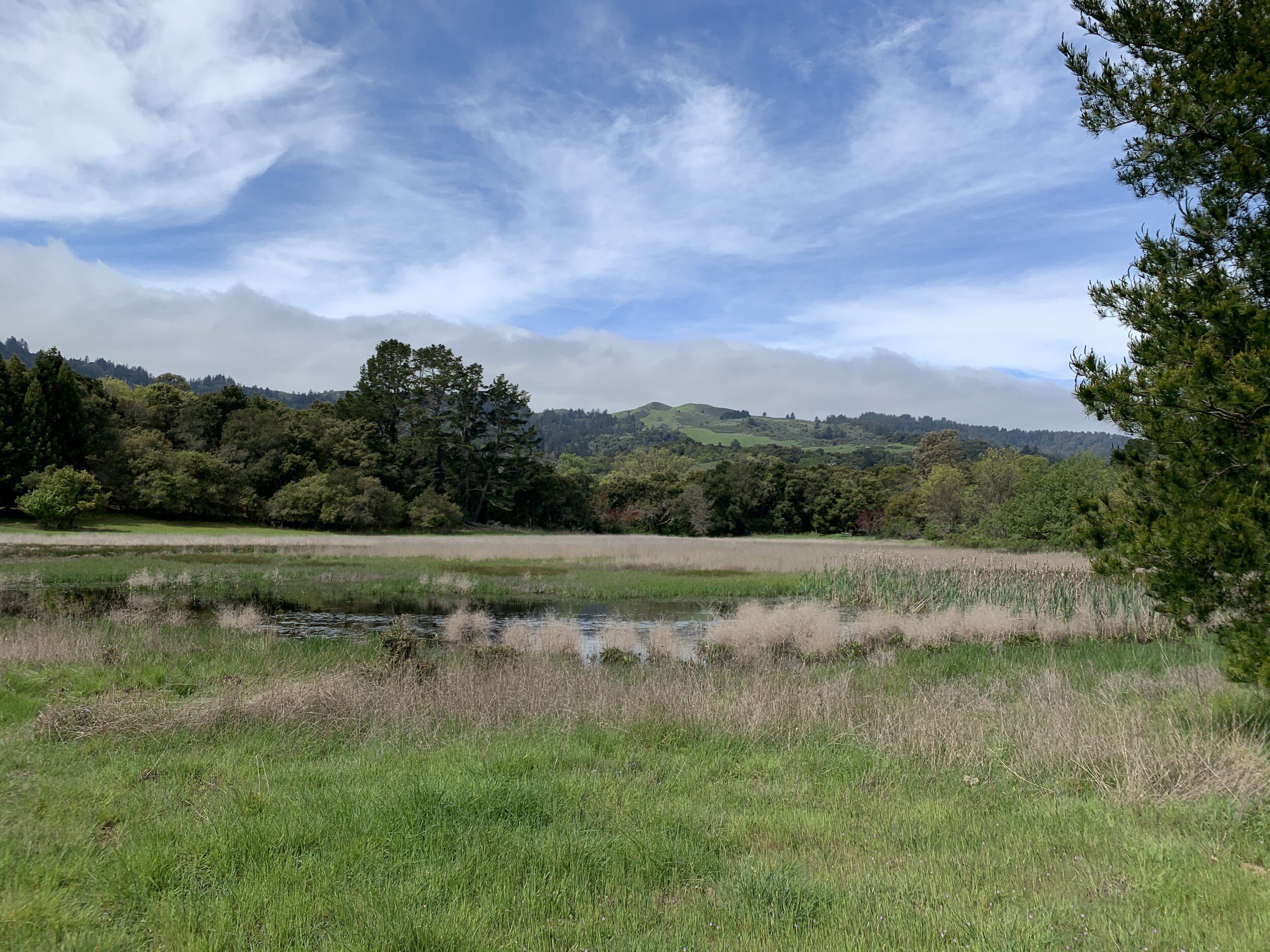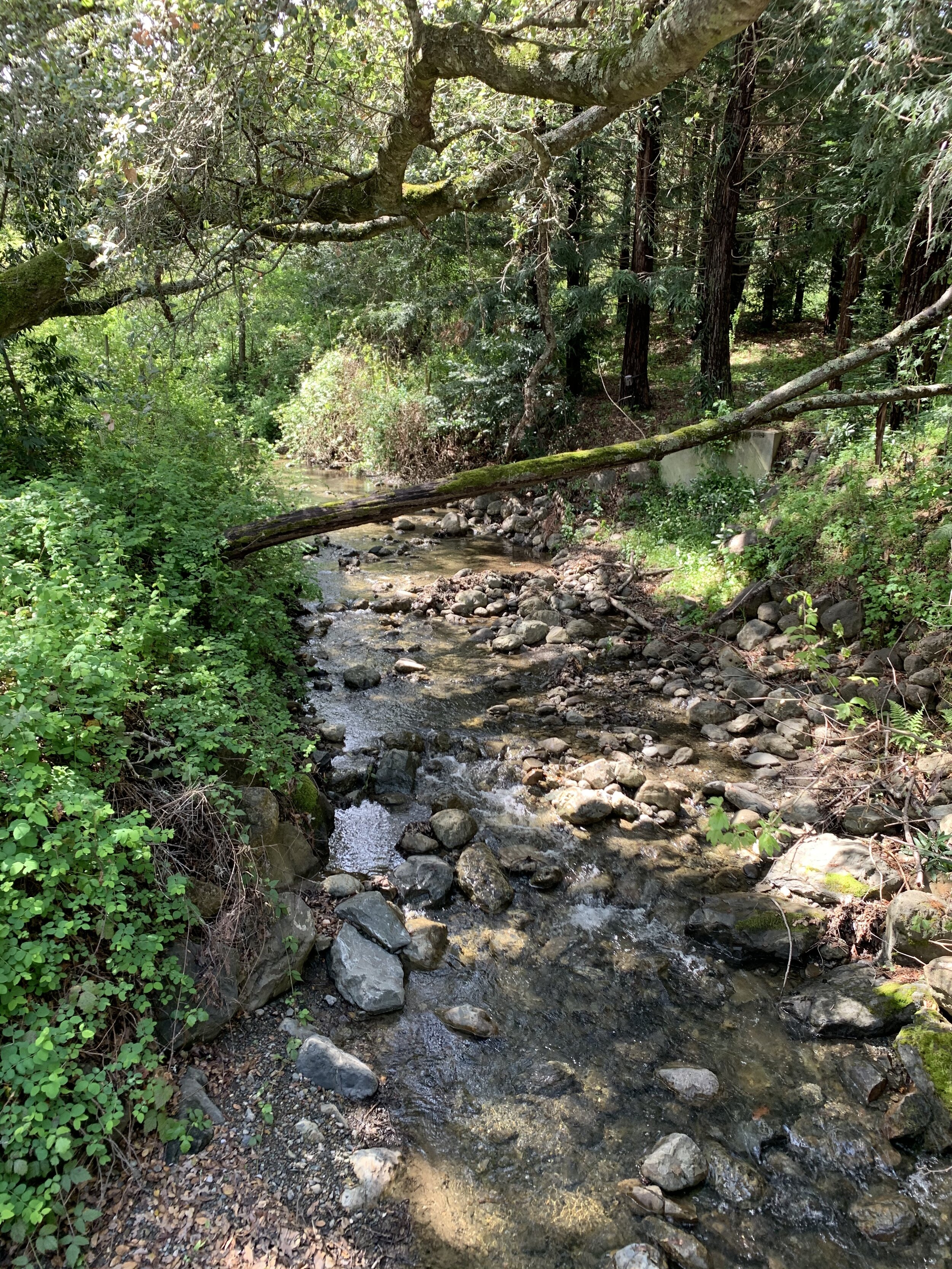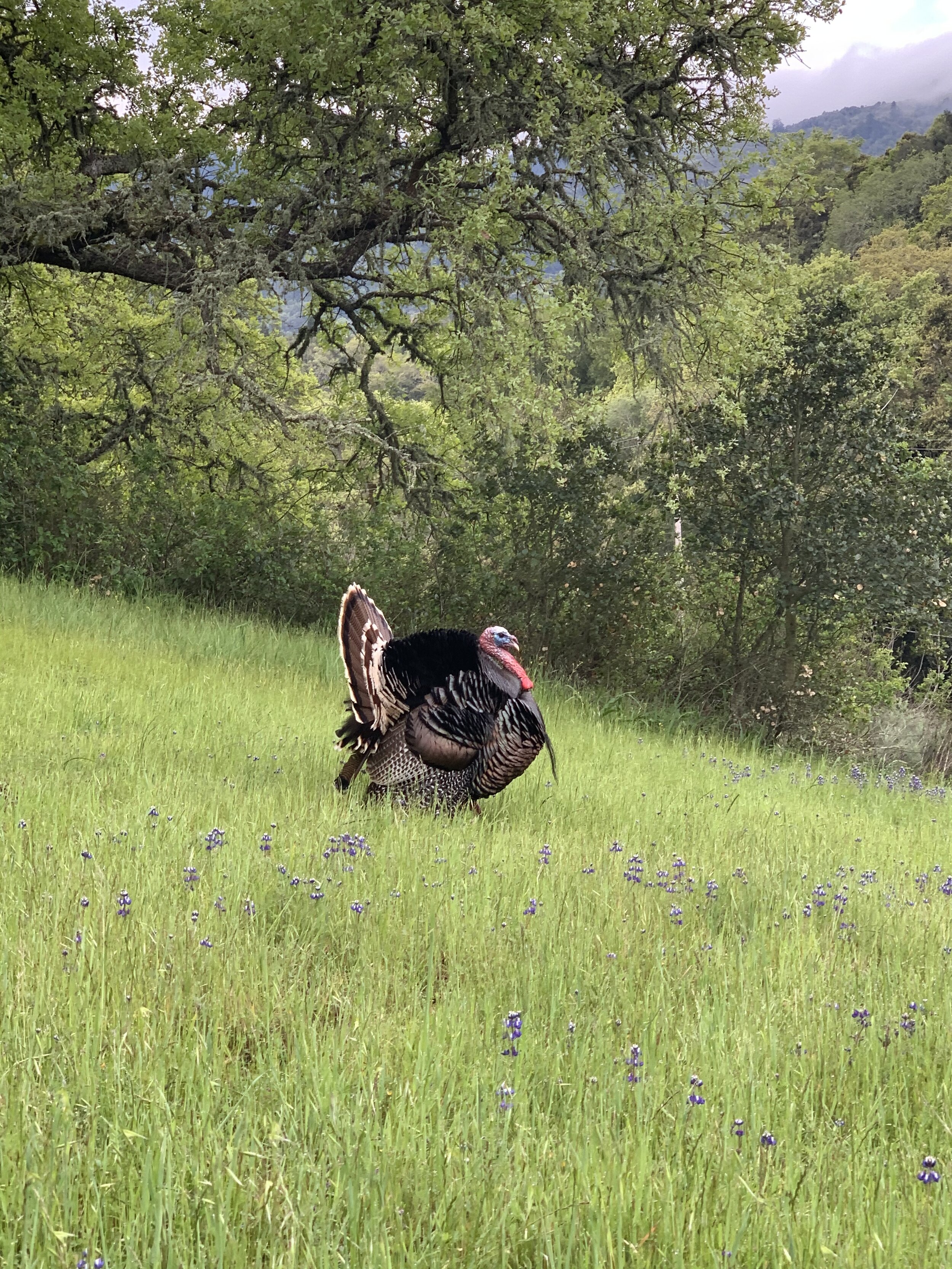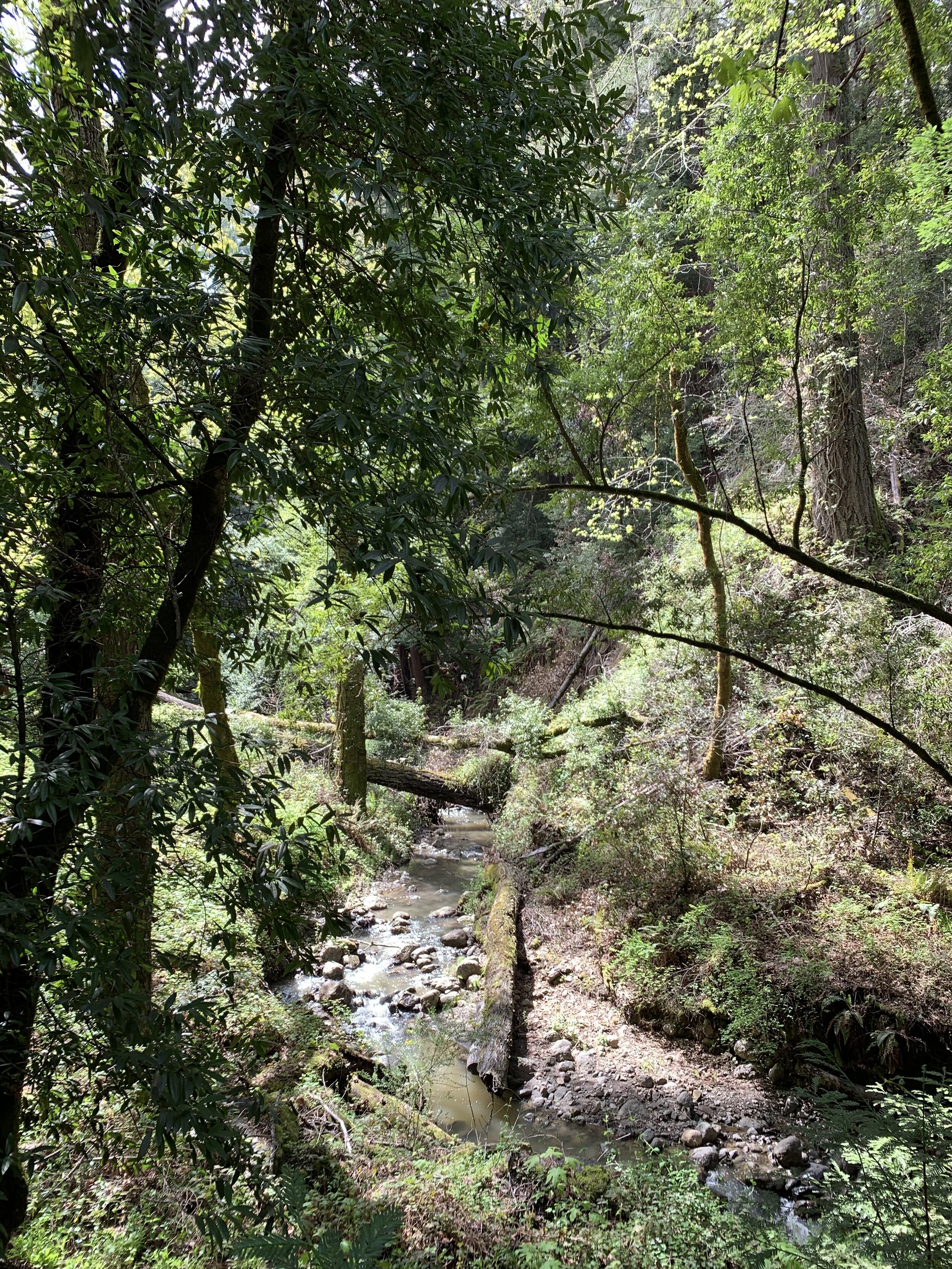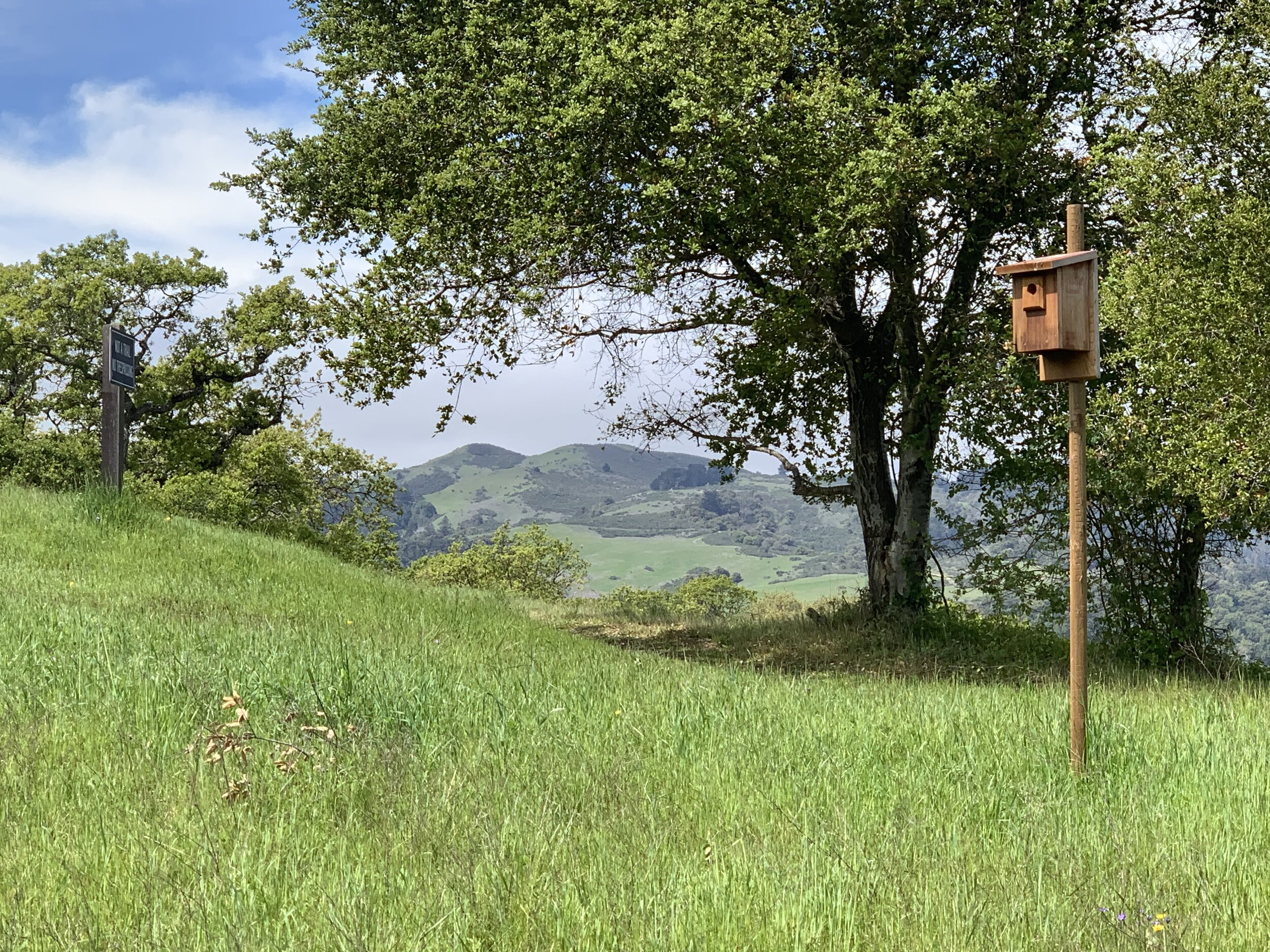conservation element
The Conservation Element addresses separately the town’s principal conservation objectives for wildlife, water (creeks, ponds and groundwater), vegetation and soils.
It notes that the lands and waters of Portola Valley comprise nearly one-half of the headwaters of the San Francisquito Creek watershed and a substantial amount of the natural foothills and hillsides remaining in the Midpenisula.
“The town and its residents are the stewards of these natural resources and should cooperate with surrounding jurisdictions on watershed management and regional conservation.”
In accordance with its strictures, the design of all developments should ensure that the habitat of all wildlife, especially endangered species, is protected, and that creek corridors are maintained and protected for wildlife who depend on them for food, shelter, migration and breeding. All subdivision and site development projects should ensure that they do not obstruct wildlife access to important water, food and breeding areas. Creek corridors should be designated as sensitive areas which provide important habitat for aquatic and terrestrial wildlife, and all subdivisions and site development projects should provide creek setbacks sufficient to buffer wildlife inhabiting or using the creek from the impacts of development.
With respect to the town’s water resources, the Conservation Element notes that we live in a semi-arid area with increasing demand on limited water supplies. It calls for protection against runoff, erosion and flooding; protection of natural groundwater recharge areas; preservation of the natural character of all watershed land; and maintenance of creeks in their naturally meandering channels. There should be “no significant alterations of stream channels or obstructions in the natural flow of water.”
Native plants, especially unique, rare or endangered species such as oak woodland and serpentine grasslands, should be protected and preserved; mature native trees and shrubs should be conserved; native vegetation should be managed for fire safety to the extent necessary to meet reasonable fire safety objectives while still protecting the biological resources of the environment; and the design of new local roads and thoroughfares should preserve the natural beauty and character of their corridor to the maximum extent possible.
Soil erosion should be prevented or controlled and corrected; development in hazardous geologic areas should be limited and, where necessary for public safety, prevented; and agricultural uses within areas suitable for agriculture should be encouraged.
The Conservation Element encourages education, control of development through enforcement of the Town’s zoning, subdivision and site development ordinances, land acquisition, public incentives for private initiatives and remedial work programs to implement its objectives and principles. Like the Land Use and Open Space elements, the Conservation element calls for enforcement of zoning, subdivision and site development regulations to achieve its conservation objectives by ensuring that the Town reviews all development projects with
The General Plan’s conservation objectives in mind, and
The goal of obtaining conservation easements when appropriate.



